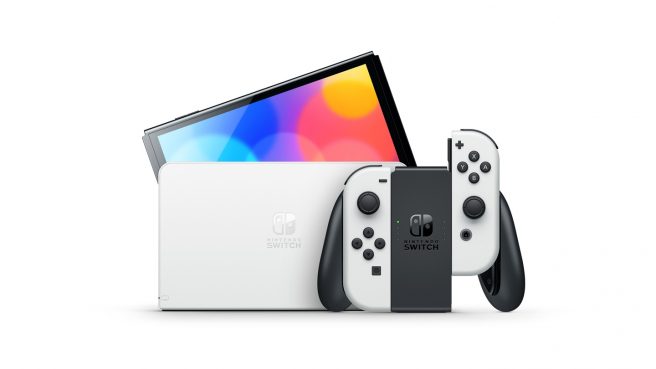Nintendo on changing Switch’s audio and speakers for OLED model
One of the biggest selling points of the new Switch model is its bigger OLED screen, but it also has other improvements such as a change in its speakers and audio.
According to Nintendo’s Toru Yamashita, the company went with closed-type speakers “where the sound quality and pressure can be increased thanks to the back of the speaker being sealed.” Such speakers “produce a clearer sound by preventing the collision of sound coming from the front and back.” There was a lot of work involved as Nintendo had less space to work with inside the console due to the bigger screen. Nintendo ultimately “needed to use the structure of the console and design a sealed space at the back ourselves.”
Below are the full comments from Yamashita as well as Nintendo’s Ko Shiota regarding the Switch OLED audio and speakers:
One more “invisible change” you mentioned at the beginning was the onboard speakers. You only explained that they are new before, so what exactly has changed?
Yamashita: The speaker parts themselves were changed. If you listen and compare them, you’ll be able to notice the difference. In order to make use of the changed speakers, we had to redesign the mechanism that leads to the produced sound and the structure around the speakers. The screen is bigger, but this means less space inside the console. So it was a lot of work from a technical perspective to work out how to make the audio better. However, for people playing multiplayer games in tabletop mode or for people playing in handheld mode, we wanted to make the audio much clearer, as well as the screen much bigger and easier to see.
Were new onboard speakers part of the original plan for the new model?
Yamashita: During the development of the new model, we wanted to achieve the same or better audio quality and acoustic pressure than existing Nintendo Switch models. When we tried using the open-type speakers, which we were using on our previous models, in the new model, we found that due to design restrictions, the sound ended up being quieter than before. We made some attempts to see if we could improve the design keeping the same speakers, but in the end we decided to use closed-type speakers, where the sound quality and pressure can be increased thanks to the back of the speaker being sealed.
But doesn’t the sound get muffled if it’s sealed?
Yamashita: Speakers produce sound from both the front and back by their vibrations. Closed-type speakers produce a clearer sound by preventing the collision of sound coming from the front and back. These closed types are often also used in smartphones and tablets, but those devices mostly use speakers that are already manufactured in a closed format and are incorporated as is. But, in order to adopt speakers that would be as big as possible within the limited space inside Nintendo Switch – OLED Model while producing satisfactory audio quality and acoustic pressure, we needed to use the structure of the console and design a sealed space at the back ourselves.
So using open-type speakers like before would reduce the volume, but in order to use closed-type speakers you’d have the difficulty of creating a sealed design in order to produce a clear sound.
Yamashita: Yes. If the seal is not intact, then the audio quality would be reduced despite changing the speakers. So the biggest challenge was preparing a space to install the speaker while assuring there is space for the sealed area, to create clearer vibrations within a limited space.
We talked about the sound from the speakers being louder, but did this change the power consumption?
Yamashita: Strictly speaking, the maximum amount of power that can be sent to the speakers is higher than the current Nintendo Switch models. In actuality, however, speakers aren’t usually used in a way to constantly output their maximum volume, so overall there is barely any difference in power consumption.
Shiota: Still, the maximum power consumption happens when it’s outputting at the maximum volume, so we have decided the settings by considering the balance of how much power we should allow it to use and by considering the circuitry as a whole. From an overall perspective, changing the speakers hasn’t led to a reduction of battery life.
Yamashita: With this new model, we have challenged ourselves to adjust, without changing the circuitry itself, the various settings in order to create a clear sound while enabling as much volume as possible, and this setting adjustment was extremely difficult.
Shiota: Rather than independently improving the speakers, mechanical design, and power, like with the OLED display, all developers combined many minor adjustments to increase the performance of the speakers overall.
Yamashita: Speaking about the adjustments of the speakers, a developer who worked on the sound adjustments has noticed that he could more easily detect the abnormal sounds using the sound of a piano, so he was adjusting the sounds with the piano piece that he himself composed. He said he had never imagined that an engineer like him would ever compose music.
You can read more from the interview here, here, and here regarding the Switch OLED’s origins, screen size, and weight.
